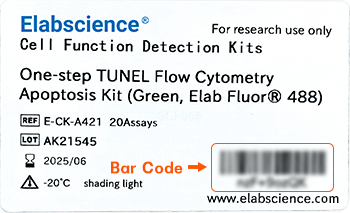SPTAN1 Polyclonal Antibody (E-AB-40268)

-

-

-

- +3
For research use only.
| Verified Samples |
Verified Samples in WB: Mouse kidney Verified Samples in IHC: Rat kidney, Rat kidney, Human carcinoma of Colon, Human carcinoma of Colon, Human kidney |
| Dilution | WB 1:1000-1:2000, IHC 1:100-1:400 |
| Isotype | IgG |
| Host | Rabbit |
| Reactivity | Human, Mouse, Rat |
| Applications | WB, IHC |
| Clonality | Polyclonal |
| Immunogen | Recombinant Rat Spectrin alpha chain, non-erythrocytic 1 protein |
| Abbre | SPTAN1 |
| Synonyms | (ALPHA)II-SPECTRIN, Alpha II Spectrin, Alpha-II spectrin, EIEE5, FLJ17738, FLJ44613, Fodrin, Fodrin alpha chain, NEAS, Non erythrocytic spectrin alpha, SPECA, Spectrin alpha chain, Spectrin alpha chain brain, Spectrin alpha non er, alpha, brain, non-erythroid alpha chain |
| Swissprot | |
| Calculated MW | 285,282 kDa |
| Observed MW |
280 kDa
The actual band is not consistent with the expectation.
Western blotting is a method for detecting a certain protein in a complex sample based on the specific binding of antigen and antibody. Different proteins can be divided into bands based on different mobility rates. The mobility is affected by many factors, which may cause the observed band size to be inconsistent with the expected size. The common factors include: 1. Post-translational modifications: For example, modifications such as glycosylation, phosphorylation, methylation, and acetylation will increase the molecular weight of the protein. 2. Splicing variants: Different expression patterns of various mRNA splicing bodies may produce proteins of different sizes. 3. Post-translational cleavage: Many proteins are first synthesized into precursor proteins and then cleaved to form active forms, such as COL1A1. 4. Relative charge: the composition of amino acids (the proportion of charged amino acids and uncharged amino acids). 5. Formation of multimers: For example, in protein dimer, strong interactions between proteins can cause the bands to be larger. However, the use of reducing conditions can usually avoid the formation of multimers. If a protein in a sample has different modified forms at the same time, multiple bands may be detected on the membrane. |
| Cellular Localization | Cytoplasm>cytoskeleton. Cytoplasm>cell cortex. Expressed along the cell membrane in podocytes and presumptive tubule cells during glomerulogenesis and is expressed along lateral cell margins in tubule cells. |
| Concentration | 1 mg/mL |
| Buffer | PBS with 0.05% Proclin300, 1% protective protein and 50% glycerol, pH7.4 |
| Purification Method | Antigen Affinity Purification |
| Research Areas | Cancer, Signal Transduction, Tags & Cell Markers |
| Conjugation | Unconjugated |
| Storage | Store at -20°C Valid for 12 months. Avoid freeze / thaw cycles. |
| Shipping | The product is shipped with ice pack, upon receipt, store it immediately at the temperature recommended. |
| background | Spectrins are a family of filamentous cytoskeletal proteins that function as essential scaffold proteins that stabilize the plasma membrane and organize intracellular organelles. Spectrins are composed of alpha and beta dimers that associate to form tetramers linked in a head-to-head arrangement. This gene encodes an alpha spectrin that is specifically expressed in nonerythrocytic cells. The encoded protein has been implicated in other cellular functions including DNA repair and cell cycle regulation. |
Other Clones
{{antibodyDetailsPage.numTotal}} Results
-
{{item.title}}
Citations ({{item.publications_count}}) Manual MSDS
Cat.No.:{{item.cat}}
{{index}} {{goods_show_value}}
Other Formats
{{formatDetailsPage.numTotal}} Results
Unconjugated
-
{{item.title}}
Citations ({{item.publications_count}}) Manual MSDS
Cat.No.:{{item.cat}}
{{index}} {{goods_show_value}}
-
IF:{{item.impact}}
Journal:{{item.journal}} ({{item.year}})
DOI:{{item.doi}}Reactivity:{{item.species}}
Sample Type:{{item.organization}}
-
Q{{(FAQpage.currentPage - 1)*pageSize+index+1}}:{{item.name}}





